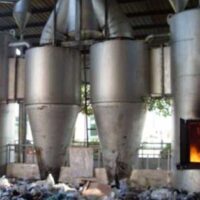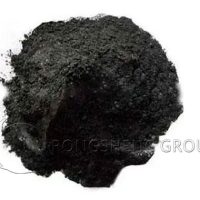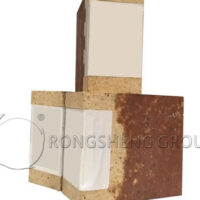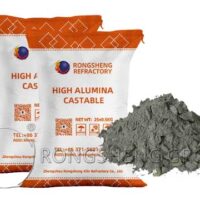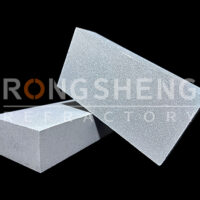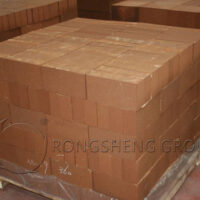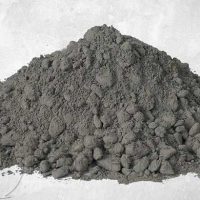Molten salt boilers use ternary or binary inorganic molten salt (a mixture of potassium nitrate, sodium nitrate, sodium nitrite, etc.) as the heat transfer medium, and use coal, oil, or gas as the fuel for heating. The molten salt circulation pump is used to force the liquid phase to circulate. Special industrial boilers deliver thermal energy to heat-consuming equipment and then return it to reheat. The entire boiler system is mainly composed of a molten salt circulation system, a combustion chamber system, and a heating system. Molten salt working temperature ranges from 250°C to 580°C. What is the configuration of refractory lining materials for molten salt furnaces? What are the monolithic refractory materials used in molten salt furnace combustion chambers? RS monolithic refractory material manufacturers will conduct a comprehensive analysis based on the type, structure, working principle, etc. of the molten salt furnace to configure refractory lining materials for the combustion chamber of the molten salt furnace.
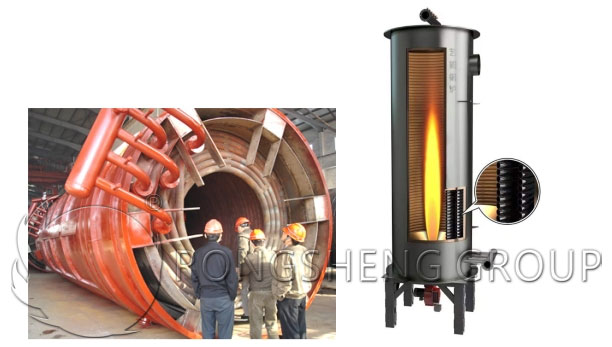
Molten Salt Furnace Classification
The structure of the molten salt furnace is generally coil type, that is, the molten salt flows in the coil along the furnace body. With the development of industrial production and technological progress, the following classification methods have been formed.
- According to the circulation method of molten salt furnaces, can be divided into natural circulation molten salt furnaces and forced circulation molten salt furnaces.
- According to different heat sources, it can be divided into coal-fired, oil-fired, gas-fired, electric-heated molten salt furnaces, and other types.
- According to the structural form of molten salt furnaces, they can be divided into cylindrical, square box, and tube frame molten salt furnaces.
- According to the overall placement form of the molten salt furnace, it can be divided into vertical molten salt furnaces and horizontal molten salt furnaces.
The internal structure of the molten salt furnace
The molten salt furnace is a heating equipment that uses molten salt as the heat medium. Its interior mainly consists of the following components.
- Molten salt pool. It is the most important part of the furnace and is used to load molten salt and heat materials. Generally made of stainless steel and other high-temperature resistant materials, the volume is selected according to production needs.
- Electric heater. This is a key component in converting electrical energy into heat. Electric heaters are generally made of high-temperature-resistant materials and have high corrosion resistance and insulation.
- Heat transfer tube. The heat energy generated by the heater is transferred to the heat exchange component in the molten salt pool. Heat transfer tubes generally use materials such as metal tubes or ceramic tubes, which have good thermal conductivity and corrosion resistance.
- Nozzle. A component used to spray heated molten salt onto heated materials. Generally made of metal, it has good high-temperature resistance and corrosion resistance.
How does a molten salt furnace work?
The working principle of the molten salt furnace is to heat the electric heater with electric energy so that the heat energy is transferred to the molten salt pool. Then the molten salt is sprayed onto the heated material to heat the material. Specific steps are as follows.
- Put the molten salt into the molten salt pool and start the electric heater for heating.
- When the temperature of the molten salt rises to a certain level, spray the molten salt onto the heating material for heating.
- The heat energy generated by the heater is transferred to the molten salt pool through the heat transfer tube so that the molten salt is maintained at a certain temperature and pressure.
- Realize the heating control of the heated material by controlling the heating power of the heater and the injection volume of the nozzle.
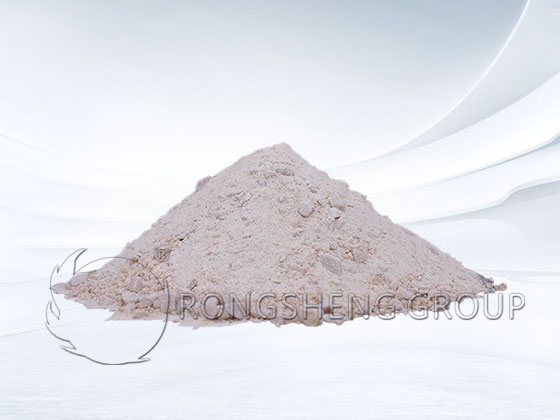
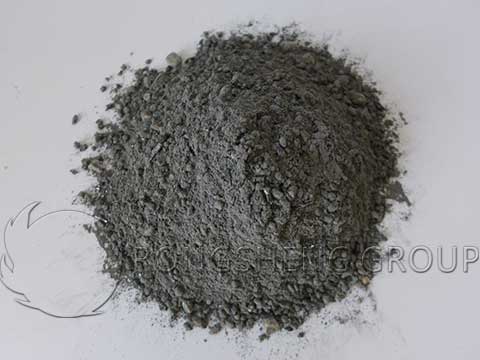
Refractory material configuration plan for molten salt furnace combustion chamber
The combustion system of a coal-fired molten salt furnace consists of a grate, a combustion chamber, a ventilation device, a coal serving mechanism, a slag discharging mechanism, a chimney, etc. The combustion system of a fuel (gas) molten salt furnace is relatively simple. It is mainly composed of a burner, explosion-proof door, chimney, etc.
Material requirements for combustion holes and furnace tops. Its long-term use temperature is 1350℃, and it needs to have good thermal shock stability, using mullite castable.
Material requirements for the bottom of the combustion chamber. The bottom uses high-aluminum wear-resistant castable.
Requirements for insulation materials at the top of the pipe and around the combustion hole. The thinnest part of the insulation layer at the top of the coil is only 250mm. It is necessary to ensure long-term use and reduce the temperature of the furnace top guard plate to below 100°C.
Molten Salt Furnace Safety and Maintenance
The molten salt furnace is a high-temperature and high-pressure equipment. We need to take the following safety measures.
- Ensure the sealing of the furnace body and heat transfer tube to prevent leakage of molten salt.
- Regularly check the integrity and corrosion resistance of the furnace body and heat transfer tubes.
- Establish complete accident plans and emergency response measures.
- Ensure the quality and purity of molten salt to prevent it from contaminating production.
In short, the molten salt furnace is a very important heating equipment with wide application prospects. We need to strengthen safety awareness during use to ensure its stable and reliable operation.

